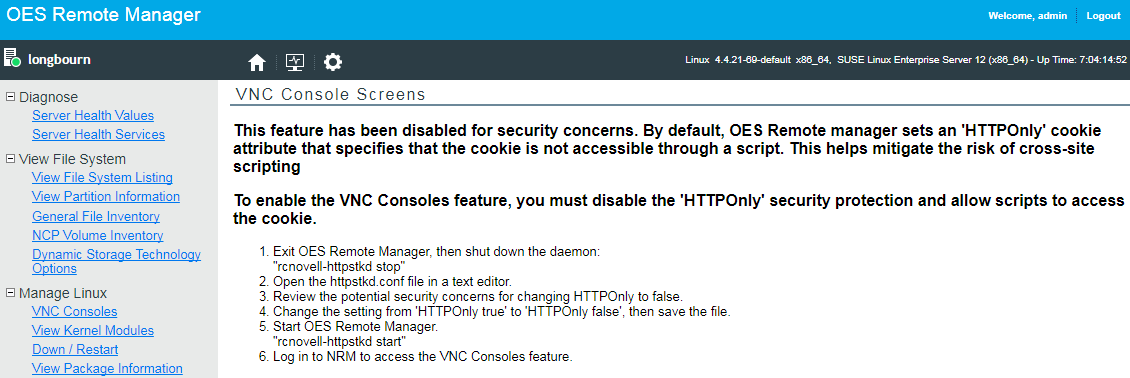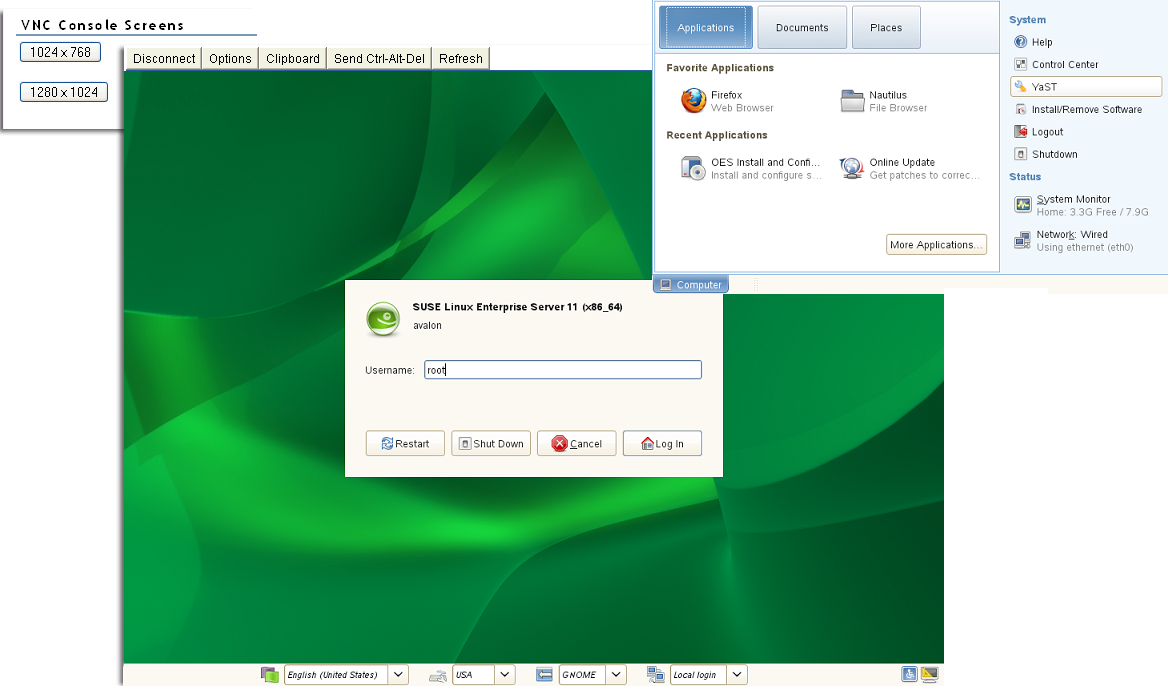9.1 Accessing VNC Consoles
If VNC services are configured on the server, you can access the VNC consoles screens in OES Remote Manager. The accessibility to the VNC consoles via OES Remote Manager for Linux is limited to user root; it is not available to user Admin. This form of remote administration is less secure that SSH; therefore, we recommend using this feature only in a secure environment (behind a firewall).
IMPORTANT:VNC access is disabled by default to prevent cross-site scripting. You must disable the HttpOnly setting in the /etc/opt/novell/httpstkd.conf file in order to enable the VNC console display. For information, see Section A.4, HttpOnly Command.
-
If VNC services are not configured on the server, you can configure them as follows:
-
In YaST, log in as the root user, then click Network Services > Remote Administration.
-
On the Remote Administration page, select the following options:
-
Allow Remote Administration
-
Open Port in Firewall (default port is 5801)
-
-
Click Finish.
-
Restart the display manager by entering the following command at the command line:
rcxdm restart
-
-
Verify that pop-up blocking is disabled in your web browser.
-
Log in to OES Remote Manager as the root user.
-
Select Manage Linux > VNC Consoles.
-
If VNC Consoles is disabled, a message is displayed instead of the console. You must disable the HttpOnly setting in the /etc/opt/novell/httpstkd.conf file in order to enable the VNC console display. For information, see Section A.4, HttpOnly Command.

-
Click the 1024 X 728 button on the VNC Console Screens page.
Clicking the VNC Consoles link opens a Java applet in a secondary browser window. The following table explains what you can do from this window.
Table 9-2 VNC Console Page Tasks and Procedures
|
Task |
Procedure |
|---|---|
|
Use any of the screens listed as though you were at the server console. |
Use the keyboard or mouse as though you were at the server console. |
|
Disconnect from the console. |
Click the Disconnect button on this page. |
|
Change any of the VNC client options currently selected. |
Click the Options button. |
|
Access the VNC client clipboard and cut or paste any commands that you might want to execute in a active terminal shell. |
Click the Clipboard button. |
|
Restart the server. |
Click the Send Ctrl+Alt+Del button. |
|
Refresh the current screen you are viewing. |
Click the Refresh button. |
Figure 9-1 illustrates a user accessing YaST on a remote server from the user’s desktop browser. To access YaST on the remote server, the user did the following:
-
Clicked the VNC Consoles link in the navigation frame.
-
Clicked the 1024 X 728 button on the VNC Consoles Screens page.
-
Logged into Linux.
-
Clicked Computer > System > YaST.
Figure 9-1 Example Access of YaST through NRM VNC Console Screens Linux on a GNOME Desktop.
